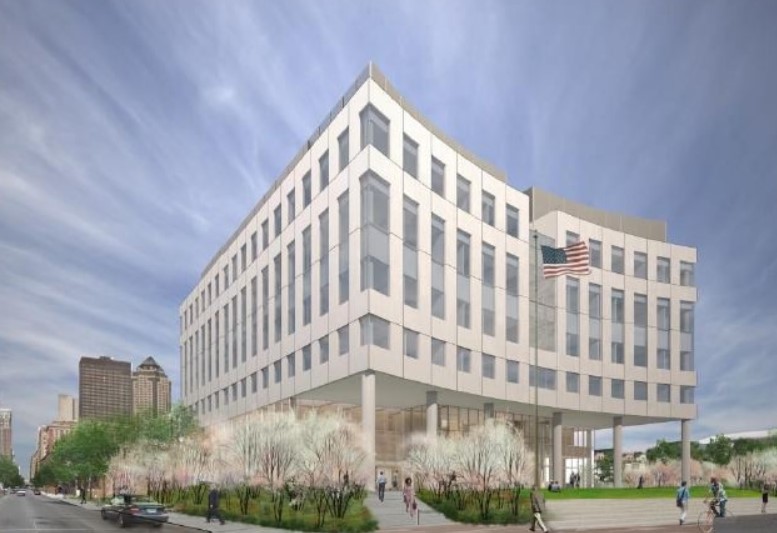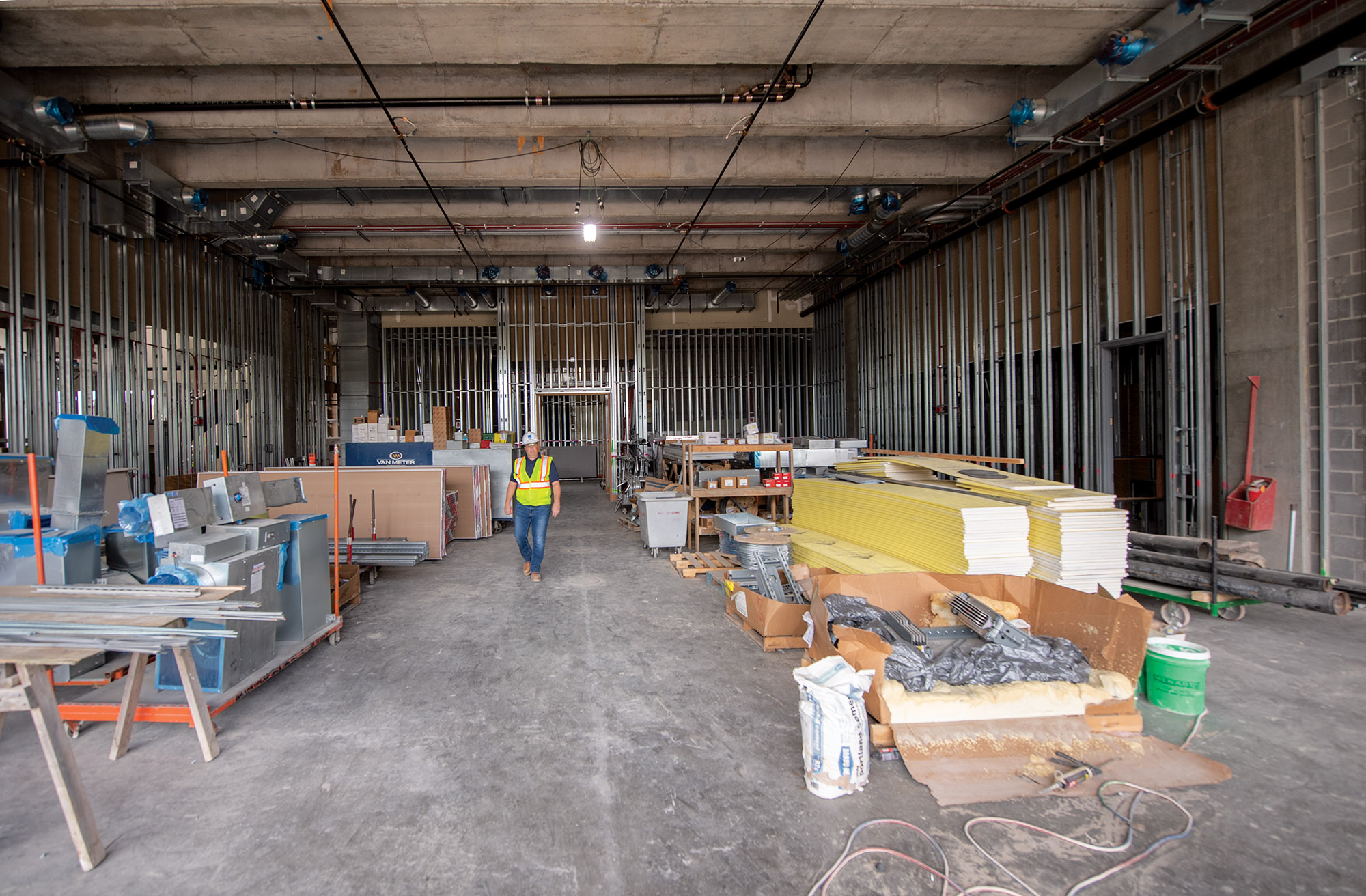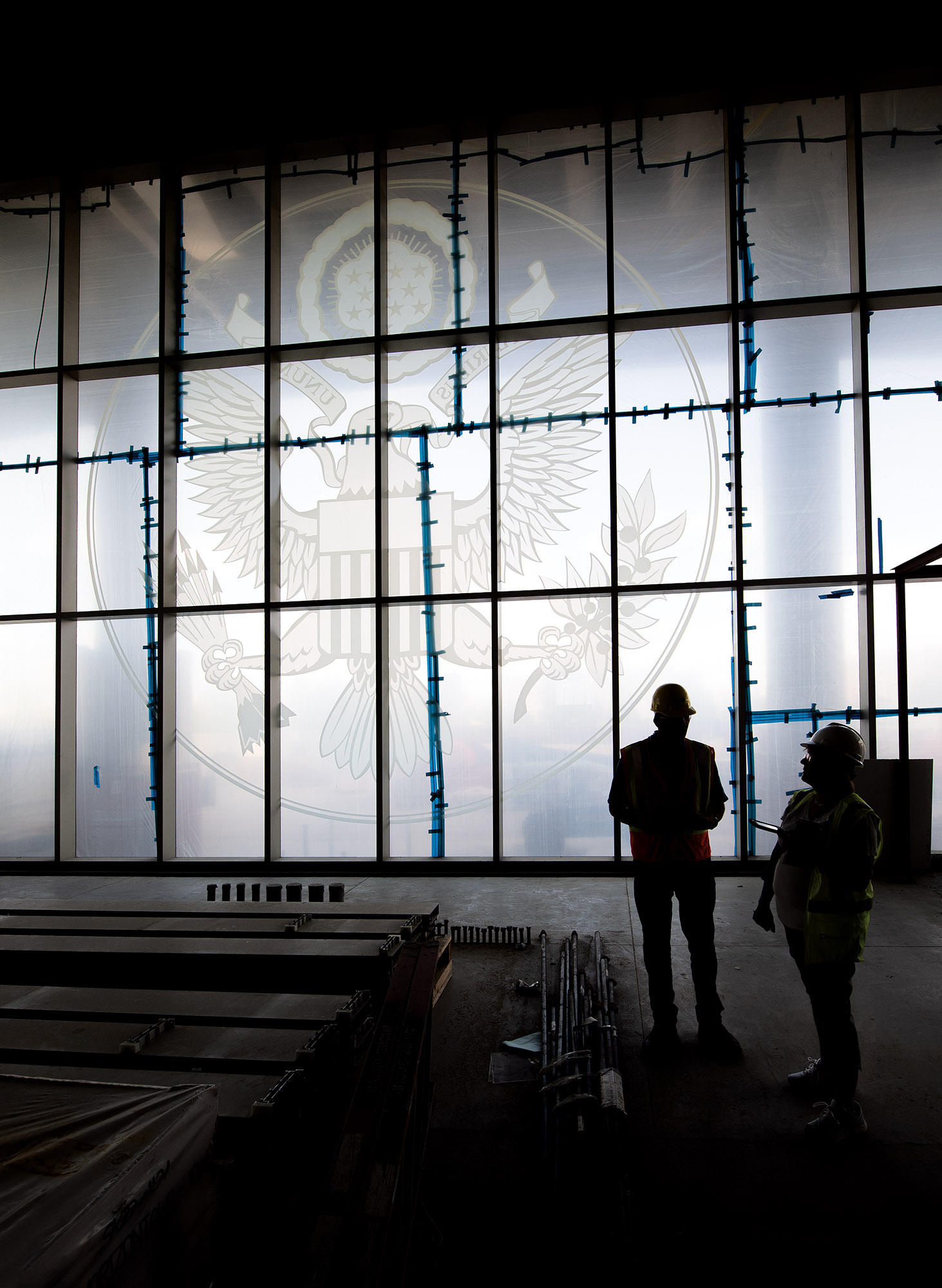Supply chain havoc slowed construction of new federal courthouse; project now expected to be completed in mid-2023

KATHY A. BOLTEN Aug 3, 2022 | 12:45 pm
3 min read time
650 wordsAll Latest News, Real Estate and DevelopmentThe Great Seal of the United States is etched into the glass entryway of the new federal courthouse under construction at 101 Locust St. in downtown Des Moines. Photo by Duane Tinkey Below: Architectural rendering of the new federal courthouse in Des Moines. Rendering courtesy of Mack Scogin Merrill Elan Architects
In August 2019, federal and local dignitaries gathered at a site overlooking the Des Moines River for a groundbreaking ceremony for a new federal courthouse.
Several noted that by late 2022, federal judicial employees in the U.S. District Court for the Southern District of Iowa would be working out of a newly constructed, spacious and secure courthouse.
The pandemic and the havoc it wreaked on the supply chain slowed the project, which now is expected to be completed by mid-2023.
Roofing materials were among the products difficult to procure, said Brad Thomason, senior project executive, construction, for Ryan Cos. US Inc., the project’s construction manager. The materials for the roof were ordered in July 2021. It took until January to get all of the materials, he said.

It has taken longer than usual to obtain other materials as well, including an overhead door that was ordered nearly 50 weeks ago, Thomason said. “Fortunately, it’s a long project so if you get ahead of it, it’s not a big deal.”
The U.S. General Services Administration announced in July 2017 that it had selected a 2-acre parcel on the west bank of the Des Moines River between Grand Avenue and Locust Street as the site for the new federal courthouse. The site originally was home to the Des Moines Coliseum and later the Riverfront YMCA.
Congress authorized $140.6 million for the project, which includes purchase of the site, design, construction and other related expenses.
Currently, the U.S. District Court for the Southern District of Iowa occupies two buildings east of the Des Moines River: the current federal courthouse at 123 E. Walnut St. that was built in 1929, and an annex at 110 E. Court Ave. The federal government leases space in the annex, which is privately owned.
The existing federal courthouse has no room to expand; it’s also difficult to provide state-of-the art security measures in the 93-year-old building, GSA officials have said.
The new courthouse will include 13 judges’ chambers and nine courtrooms with enough space for family members, victims, the public and others to watch proceedings, court officials have said. The courthouse will also provide offices and workspace for U.S. Probation and Pretrial Services, U.S. Marshals Service, federal public defenders and U.S. attorneys, a law library, and a judicial education center.
Underground parking will be provided for the judges, who will enter the building through a secure access.
When visitors to the courthouse enter the east side of the building, they’ll see a large Great Seal of the United States etched in frosted glass. The seal will also be at the top of the building’s west-facing side.

The columns will be covered with stone. Written on the stone will be texts from myriad historical legal documents, Thomason said. “You’ll be able to read them from the different floors.”
Also on the first floor will be a ceremonial courtroom (pictured at right) where naturalization ceremonies and other special events will occur.
Dozens of trees will be planted on berms that will surround the building, Thomason said.
“It’s going to make it very difficult for a car to drive from the curb into the building,” he said.
RELATED ARTICLE: ‘White house’ being dismantled; was used for meetings, offices











